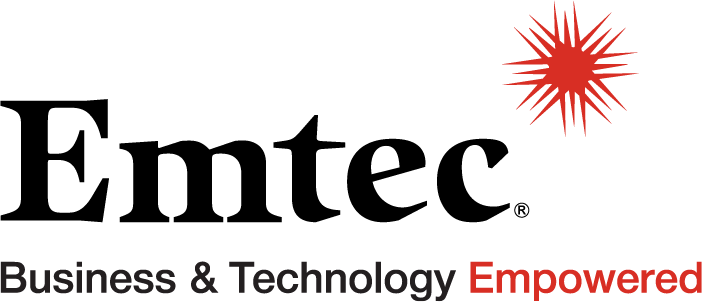Article: Progressing your BI Strategy – Advance to Run
Article: Progressing your BI Strategy - Advance to Run
By Sajid Patel
In the first two articles (Crawl & Walk) of this three-part series, we discussed what it takes to reach a level in your Business Intelligence (BI) strategy where the environment accelerates to deliver value to an increasing set of business groups. In this final article, we will discuss some of the considerations to take your BI strategy to the next level of value and advance to “run.”
* “Run”: Integrating BI into Key Business Functions
When you chose to progress your BI strategy to the “walk” stage, your goal was to build an information framework that would increase in useful content and become a trusted source for the business community. You introduced more subject areas and started to create unique relationships that helped transformed data to information. The additional content correlated to supporting the needs of more diverse business groups. The need for static reports is slowly diminishing and being replaced by more self service reporting and analysis capabilities. You also started to introduce greater controls, refine your project management infrastructure and build out the appropriate business and technology staff to scale with demand. Having reached the “walk” stage in your BI strategy, your organization could happily continue in its current path and gain benefit with current capabilities. But if your quest is to continue enhancing, you may be asking yourself “What does it mean to advance the BI strategy from here?”
The “run” stage is simply about building upon the successful framework you already established during the “walk” stage. The focus turns to integrating BI into key business functions by creating integration points with other applications and delivering information in unique ways. The following outlines some of the key objectives and considerations for reaching the “run” stage.
* Integration with Other Applications: Closing the information loop
For the most part during the “crawl” and “walk” stages, the flow of information was one directional; you captured various content from different sources into an information framework that in turn became the source for reporting and analysis. To reach the “run” stage requires the information flow to be more multi-directional and have information directly and continuously influence other applications. The best way to explain this is through examples.
Planning and forecasting is a typical need for most organizations, sometimes with a focus on financials or sometimes with a sales management focus. It is common to have separate applications that support this planning and forecasting. If you have the right content in your information framework, create the interface to provide the trusted “actuals” to the planning and forecasting applications. The “actuals” refers to real sales or financial detail captured from ERP or operational systems representing true outcome. Ensure that this data is provided to support the various points of the planning process to effectively influence the outcomes. Inversely, capture the plan and forecast data from these applications into your information framework to support performance reporting needs to measure effectiveness and progress. It’s a simple yet powerful example of supporting a key business function by closing the information loop.
Another simple example of integration involves campaign management. An effective campaign to market new offers or products requires fresh data with criteria that targets the right audience. Taking information about customers, their buying patterns, results of prior campaign efforts, characteristics of accounts and other details can provide a good foundation for targeted campaigns. Another example of criteria that can be fed into the campaign process is the collection of attributes created by advanced analytical activities which will be discussed later in this article. Inversely, the campaign details can be important content to bring into your information framework to measure effectiveness.
Beyond these simpler examples are much more complicated integration possibilities. We won’t discuss them in any detail here but one such scenario involves implementing Service Oriented Architecture (SOA) that allows real-time applications access to trusted information. Examples of business functions where SOA and your information framework can provide very unique capabilities include call center operations, customer facing web & portal applications, fraud detection, outbound marketing, etc. There are many big success stories of organizations using this approach to gain a competitive edge.
* Catering to Advanced Users: Unique information delivery.
The next stage of evolution from self service reporting is exception based reporting. Although self-service allows users to pick and choose their desired criteria for reporting, the end result is typically a report, a spreadsheet or maybe a simple chart. Now the emphasis must be to deliver information that aligns with the unique ways that advanced users want to manage their business.
More and more, business leaders want to manage their functions through the analysis and monitoring of Key Performance Indicators (KPIs). KPIs identify the main metrics that allow business owners to measure performance from various perspectives. Examples include Net Sales growth vs. Last Year, Market Share by Product Line, net new unique customers and anything that aligns with how the business manages strategies. Furthermore, KPIs are unique to the user and his or her place in the organization. Whereas ‘C’ level executives and VPs are interested in KPIs at the macro level, line level managers are interested in KPIs at the micro level matching their specific areas of responsibilities. Presenting the KPI through a “dashboard” provides for an actionable representation of metrics, some of which may indicate exceptions or points requiring more analysis. Business users can then drill down from the dashboard to the details to further understand or address the specific exception.
Business users typically will have more than one KPI that relates to their business responsibilities. Couple this with the custom requirements of each KPI per user and you have the ingredients that warrant implementing a portal. A custom portal that combines select KPIs with other corporate or external information allows each user to begin a day by seeing all relevant information in an aggregated and well-structured snapshot. Based on what is depicted, they can decide to further analyze what’s required and manage the business by exception.
By delivering information in more advanced ways, the framework can now cater to a broader range of users covering various levels in the organization.
* Open Accessibility to Information: Advanced use of information.
Till now the discussion has been mostly focused on the aspects of BI that covers reporting and analysis. But the progression of your BI strategy means a greater emphasis on deep analytics to extract unique value from your information. Analytics through the use of sophisticated methodologies, algorithms and models discovers unique correlations between data and hidden patterns unattainable through visual analysis. The output of analytical efforts can then influence for example how companies should treat individual customers or what actions a company should take to improve profitability.
Although many BI technologies have some of the features, analytics can often involve the use of specialized products utilizing their own approaches to gathering and processing information. Making your information framework accessible to analytical platforms will take some consideration. Typically analytical solutions require lots and lots of data and their access patterns for using data differ from reporting solutions. Beyond the technology considerations, implementing analytics requires a skilled business organization that is imbedded into the processes of the other business groups.
* Establish PMO: Maintain control over projects.
The demand for BI will continue to grow as more and more business groups embed BI into their key processes. As the strategy advances, it’s time to treat the entire effort as a program requiring clear management structure and refined governance policies. Individual projects become part of the all encompassing program and prioritized through formal protocols between business and technology groups. A Program Management Office (PMO) serves as the gate keeper and maintains control over active and upcoming projects.
The types of challenges you will encounter with the “run” stage are quite different from the first two stages. Although the business will have challenges managing the flow of projects, technology teams will have some of the greatest challenges.
# “Controlled Growth:” Your ability to manage the growth and use of your technology environments will be tested. The first issue will be the ongoing addition of data to the information platform. The second issue comes from the access patterns; reporting and analysis will simultaneously compete for resources with intensive analytical functions. Lastly, as the type of functionality broadens, access to the environment is not limited to business hours but extend into around the clock demand. Unfortunately there isn’t a simple answer to address these issues. The best approach is to mitigate the risk by carefully assessing impact and the solution before introducing new content or capabilities. More technical expertise and more emphasis on architecture will become necessary.
# “Cost Management: With the continued growth of the environment and the demand for resources to implement projects, it will become quite easy to run into budget issues. You may have to increase investment in environments and people to keep up with demand. Investment can be justified if there is business value returned for that investment. Be sure not to take shortcuts and insist on verified business benefit for proposed projects. Furthermore, the exercises to establish budgets for the various groups needs to closely evaluate the pipeline of proposed projects. Otherwise it may lead to lots of concessions and negotiations that ultimately will impact the effectiveness of your environment.
Through this three part series, I presented many of the major considerations to progress the BI strategy for your organization. Although there isn’t one single formula to apply, success is very possible by incrementally and carefully increasing capability. Build upon your prior successes and don’t be shy about asking for help. It’s simply about making the right decisions and solid execution. And all along the way, take the time to enjoy the journey.
To read the article on TechnologyFirst, please visit: https://www.technologyfirst.org
About the Author
Sajid Patel, Managing Director of Information Management Practice at Emtec
Sajid specializes in data warehouse, data integration and business intelligence architectures. Sajid began his interests in this domain with the introduction of scalable architectures in the early 90’s. Since 1997, Sajid has held leadership positions, either in the capacity of running his own Data Warehouse consulting business to partnering with talented leaders on specialized practices. He currently co-manages the Information Management practice at Emtec and continues to focus on helping customers achieve success with the right solutions in this domain.
Deanna Evers
Phone : 973.232.7897
Email : [email protected]
ABOUT EMTEC
Bridgenext combines outstanding talent and deep expertise across an expansive set of exceptional solutions to help clients realize their digital aspirations in ways that propel their businesses forward. Its global consulting and delivery teams across the U.S., Canada and India facilitate highly strategic digital initiatives through digital product engineering, automation, data engineering, and infrastructure modernization services, while elevating brands through digital experience, creative content, and customer data analytics services. Connect with us at https://www.bridgenext.com.



Comments are closed.